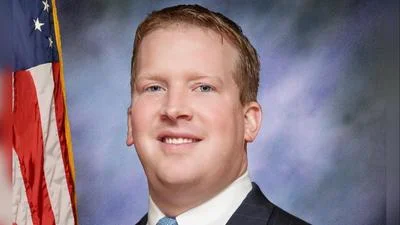This summer marked an incredible experience for STEM-major students with various complex summer research projects. Each summer, Greenville University students have the opportunity to research in-depth topics relating to their major with the assistance of dedicated faculty from both GU and outside universities. During Homecoming weekend, GU opened to the public the Summer Research Poster Presentation event where students presented their work through posters to the alumni in Snyder Hall.
Optimal flowering time for highest yield
This summer, on GU’s campus, Phuong Le and Lucas Correa focused on are trying to figuring out the most optimized flowering time for plants in different environments. They worked in four different scenarios based on the nutrition available and acquired realistic results.
Through the dedicated work from these two, scientists can now model the whole life cycle of the tree in the most realistic way. Phuong illustrated the significance of her project in this way: “Do you think annual plants are important? For instance, pepper plants? Those are the foods we consume daily. So, what we wanted to do is to find the optimal time to get the maximum number of fruits.
With these graphs using the R programming language, we can know which environment the plant will grow the best and give the best output.” Despite the complexity of plant analysis using R language, Phuong and Lucas have done a great job in modeling the information out of the constant interaction between plants and the environment.
External Summer Research
Brent Roach focused on synthesizing covalent organic framework (COF) at Southern Illinois University during this summer.
There is currently an interest in the industry for using COF for carbon dioxide capture specifically. For power plants to be able to capture carbon dioxide and reuse it, another major interest at the moment is to potentially use COF as a place for reaction to go through, which can be used for the creation and study of prescription drugs.
This is what Brent has said about the summer research: “If you are really interested in science, and if you eventually want to go into graduate school, this is one of your best ways to get prepared for graduate school. It really gets you the feel about what it means to work in a lab!”
Brothers with a love of math
Two of the participants in this year's summer research are the Kessinger brothers - the famous twins in GU’s math department. The funny part is that while Daniel Kessinger completed research outside of GU last year and this year completed research in GU, his brother James Kessinger did the opposite thing.
This summer, Daniel did his research at Greenville University, trying to provide a mathematical description for the properties of his instructor Dr. Choi’s model so that they could better discover how the model fits in with physics. James Kessinger did his research in Grand Valley State University in Michigan on the wolf and moose population of Isle Royale.
In recent years, the wolf population is facing extinction, and to prevent that, the National Park Services have been undergoing a process of adding wolves to the Isle Royale in the hope to avoid extinction. James and his partner fitted a mathematical model to describe the change in the wolf and moose (the wolf’s prey) population which helped figure out how the wolf should be added.
Monitoring trees in local areas
Mark Nguyen and Simba Bui’s research project is more physically demanding than the rest of the GU projects. Every day, they have geared up with binoculars, cameras, etc., to go outside and monitor trees in Bond County and neighboring areas.
They rated trees based on leaves’ symptoms on the scale from 0 to 10. Zero is completely healthy and 10 is dead. The summer was extremely hot, over 100 degrees Fahrenheit, and they had to wear long sleeves, boots, and long pants to prevent exposure to bugs and poison ivy.
After all, it’s a sad moment when these young researchers realize that the tree is dying, and the damage level has gotten worse over the years. Their research can potentially be used for policy changes regarding the use of herbicides in the future.
Mark said: “The best part is being able to work under our supervisor and also our professor, who are really instructive and supportive. We also have met many people, especially staff at school as they have volunteered to let us come to their house to monitor trees. It was fun!”
Science Advisory Council
On the same day, the Science Advisory Council meeting took place with the special presence of GU alum Mark Rose. Mark Rose was a biology and chemistry major, graduating in 1976. He was here as a pre-medical student and just retired after 23 years as a chief legal officer of the hospital system in northeast Ohio. “It is hard to not be wistful about my college years here. The friends I made, the outstanding professors I had, the dorm and house I lived in, a bit of pure sodium that we threw in the can of water in the general chemistry lab just to see the explosion,” Mark laughed. He believes that youth is not wasted on the young. Youth is spent laying the groundwork for the learning that life affords us, and Greenville was the perfect place for that. This is what Mark said about his reason to support GU and its science program: “Christian higher education is in a position to change the world and support Christ’s kingdom in ways that secular universities cannot. Other colleges and universities may focus on impacting the world in terms of scientific discoveries, but they have no attitude on impacting the world in terms of eternal matter. Greenville University can do both. That’s why I am here.” His words have inspired many science students attending the meeting, especially those who are uncertain about their future.
Special thanks for the Science Advisory Council to make the summer research available to students with great funding and support.
All GU Summer Researches Projects and Members
- Towards Hypervalent Iodine Based Covalent Organic Frameworks by Brent A. Roach*, Krishna Pandey, and Prof. Kyle N. Plunkett
- Towards the Study of Metal-Amino Acid Interactions: Implementation of Air and Moisture Free Functionality by Kate Prakahrenka* and GU Prof. Scott Pattenaude
- Properties of Chip-Firing on Certain Tree Graphs by Eli Atkins* under the supervision of Prof. McCabe Olsen
- Probing tRNA proofreading mechanism of Trypanosoma brucei in vitro by Charles Ingram*, Rylan Watkins, and Prof. Karin Musier-Forsyth
- Optimal Control Applied to Wolf and Moose Population Dynamics by Maya Bocanegra and James Kessinger* under the guidance of Prof. Norma Ortiz-Robinson
- Group Theory on Physics by GU Prof. Hyung Choi, Daniel Kessinger*, and GU Prof. Andy Thomack
- Gravitational and Anti Gravitational Lensing Simulation by Thong P. Ngo* and GU Prof. Hyung Choi
- Influence of Nitrogen and Phosphorus Availability on Optimal Flowering Time: A Dynamic Allocation Model Approach by Phuong Le*, Lucas Correa* and GU Prof. Eric Nord
- The Damage of Plant Growth Regulator Herbicide on Tree by Mark Nguyen*, Khang (Simba) Bui*, and GU Prof. Andrea Nord
Original source can be found here.





 Alerts Sign-up
Alerts Sign-up